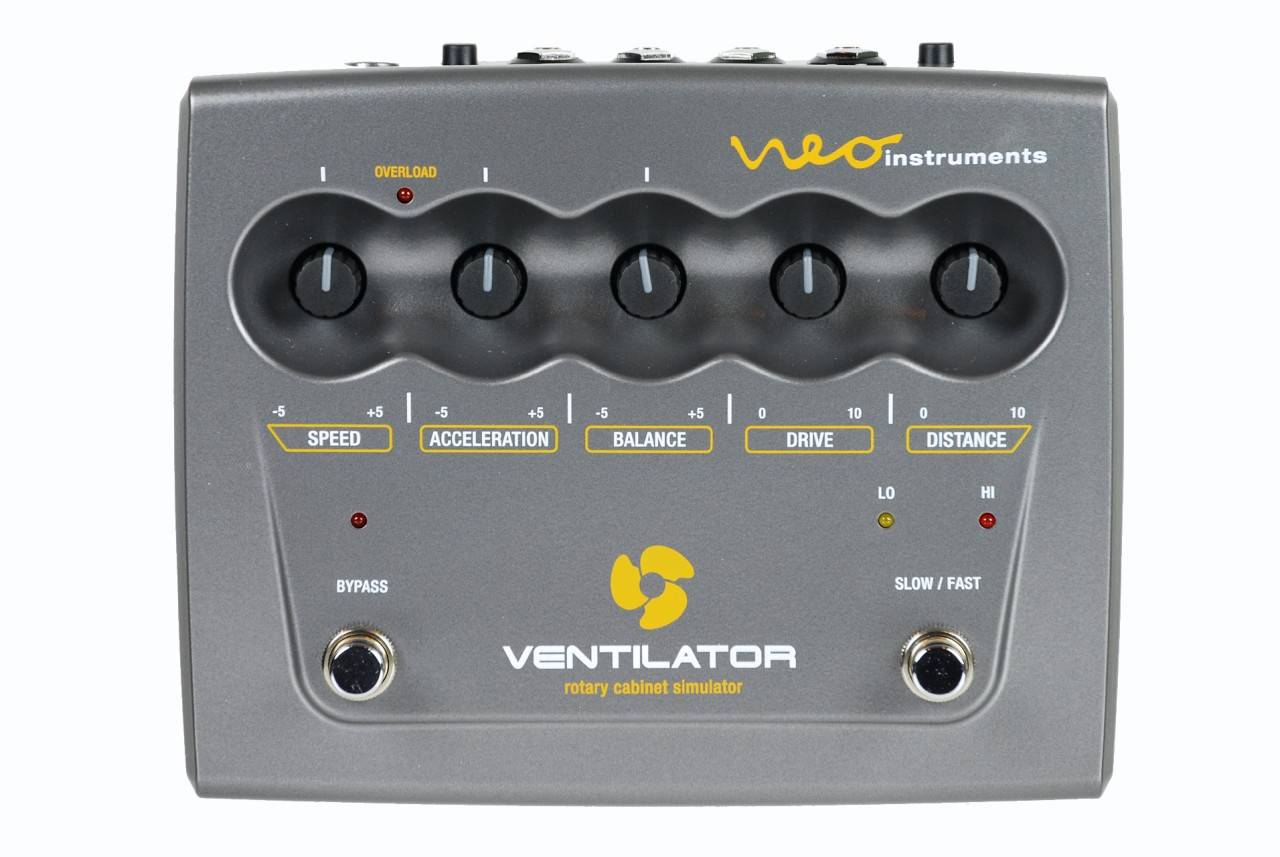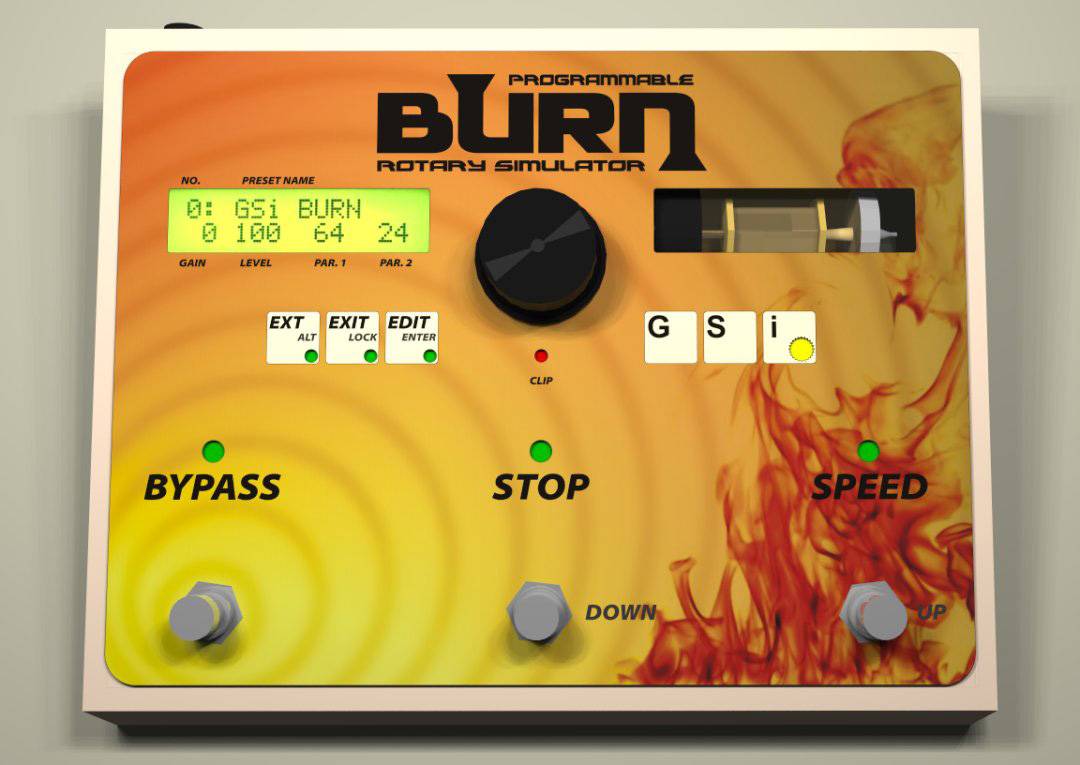I thought I would compile a little article on a great device that I often use on stage connected to my Hammond. For years I aspired to having a Leslie rotary speaker and when they finally made an 11pin one that I could carry/get through venue doors/get in the car I snapped up my MK1 Leslie 2101 for £999 inc 11pin cable from my friends in Northampton. Incidentally I have known these guys for quite a number of years and Darren is not only musically but technically very proficient too. They are majoring in “Key B” organs these days, whilst still having a great Hammond classified section. but I will save those for another blog.
Nope, today is about the NEO Ventilator. Basically it is a stomp box Leslie Simulator and unlike all other Leslie Sims, in my opinion, it is not rubbish. What a find. I first heard about these on the forums with, usually American guys, gushing about how good they were. I was sceptical, I mean stomp boxes for this haven’t got a great track record but over the (literally) years I was persuaded to buy one on the basis that little gigs/open mic nights/recordings may be made easier even if the actual sound wasn’t as good.
Lets have a look then…
It’s a beast of a pedal and quite heavy with it. Natively Mono in and Mono/Stereo out it runs via quarter inch jack and can be controlled by the push buttons or by the Hammond half moon switch that can control the newer XK Pro systems. Importantly without that switch you are unable to ‘stop’ the Leslie completely unless you purchase the extra NEO foot switch. If you have an XK3/c you would use the half moon – much cooler!
The controls are simple and the basic rule of thumb is that if you have all the dials at ’12-Oclock’ you won’t be too far out. But let’s go through them anyway, you have; Speed, Acceleration, Balance, Drive and distance.
- Speed – This is how fast the Leslie (I will refer to the SIM as Leslie from now on) rotates when it is at top speed
- Acceleration – is how long it takes for the Leslie to get from slow to fast
- Balance – is the tonal balance between the bass and treble rotor
- Drive – is just lovely. sorry, its the amount of overdrive added to the Sim
- Distance – is the simulated distance of the Mic to the speaker. 0 = far away and mellow and 10 = right in front of it picking up all the extra tones of the trouser flapping goodness.
Actually its almost unplayable with distance set at 10 and I set it around 2 o’clock. The overdrive is awesome and much better, in my opinion, to the internal one. Although later I will do an article on replacing the valves on the XK3c.
The best thing about the Leslie 2101 is the brake, recorded the brake is earth shattering and nothing that hasn’t got a Leslie badge will beat it. In fact I get the impression that this was developed to be recorded as a live situation the 2101 can get a bit muddled as the overdrive (on the Mk1 at least) is technically in the wrong place in the chain and a strange chorus mush can appear that takes a bit of work to programme out.
anyway, plug your Organ clone in to the vent and switch it on. The excellent Jim Alfredson demonstrates it so perfectly well here that it really isn’t worth me recoding a demo:
Lets forget the custom cable for a minute but I hope that you can see that this piece of kit is serious. Jim goes on in a second video to compare the NEO directly with a Leslie 122:
Pretty close eh?
What Jim does live is use his Leslie 2101 as an on stage monitor and send the stereo out of his Ventilator to the desk. for this he need a way of controlling the slow/fast Leslie from his organ on both the Vent and the 2101. To do this he has made a cable. I’ll find out the link for it soon.
There is a fault with some NEO Ventilator power supplies however and despite numerous conversations with the retailer it was only when I had confirmation directly from NEO that some power supplies within a serial number range created a high pitched whistle behind the sound was I able to go back to the retailer who immediately shipped me a new power supply. My advice, any problems contact the manufacturer in Germany.
It’s not cheap, the Vent cost 330 green queens (thats 385 Euros) but I have to say its the best £330 I have spent since my XK3c which was the best £2600 I had spent since my XB-2 which was the best thing I’d bought since the ARIA OD-2 overdrive pedal for my Yamaha SK20 Organ clone!
In conclusion I was sceptical at first but in all honesty my Leslie hasn’t moved from the garage since the day I bought this item it is that good, and like many on the fora I am actually considering buying two of them just in case!

